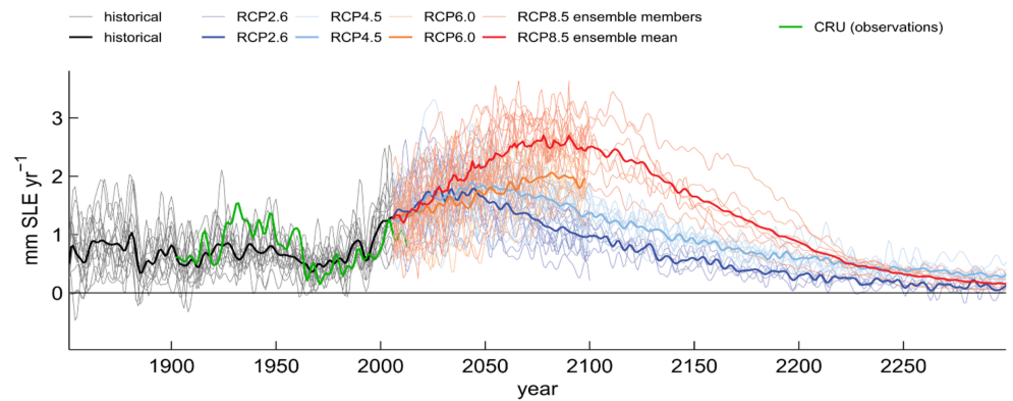PARSL-Glac
Predictability and Attribution of Regional Sea Level Change Caused by Glacier Mass Change (PARSL-Glac)
Mountain glaciers and ice caps are responsible for almost one third of the current rate of sea-level rise (SLR), even though they store less than 1 % of the global ice mass. The mass redistribution caused by glacier mass change is one important cause of systematic regional differences in SLR. Glaciers will continue to be an important contributor to SLR throughout the 21st century. Past glacier mass loss was recently successfully attributed to natural and anthropogenic causes, while the individual components (e.g. natural forcing vs. internal variability, or greenhouse gases vs. aerosols) were not specified. In the proposed project, we will perform a more specific attribution of past mass losses, and - following the same principle - extend the attribution to the projected mass loss during the 21st century. This will allow a quantification of the predictability of regional SLR caused by glacier mass loss. It will increase the understanding of the sources of uncertainty and will lead to better estimates of glacier related SLR. Specifically, we will investigate the following mechanisms:
(i) Due to the long response time of glaciers, mass loss committed by past forcing but not yet realized, is a strong component of glacier mass change on annual to decadal (in some regions even centennial) timescales. This mass loss commitment forms the basis for a relatively strong and spatially fine-grained predictability of future glacier mass change. We will quantify the committed mass losses on the global scale, subsequently leading to a quantification of committed regional SLR.
(ii) It has been shown that modes of internal variability (e.g., NAO and IOD) cause a significant fraction to regional glacier mass change on interannual timescales. However, a comprehensive analysis on the global scale is missing. We will perform this analysis, quantifying the uncertainty in mass loss (and SLR) projections associated with internal variability.
(iii) Natural forcing of the climate system has a significant effect on the global glacier mass budget (e.g., ~1 mm drop of sea level after each major volcanic eruption through glacier mass gain). As with the internal variability, we will quantify the uncertainty of projections attributable to this mechanism.
(iv) It has been shown that the impact of anthropogenic forcing is detectable in past glacier mass change; but so far, no specific attribution to its individual components has been done. Analyzing the impact of individual anthropogenic forcings on the glacier mass budget will allow us to isolate the impact of different emission scenarios on projected glacier mass change and associated SLR.
For all these four mechanisms, we will perform hindcast experiments in order to obtain a comprehensive uncertainty assessment. We will then perform ensemble projections in order to test whether the ensemble spread can in fact be explained by the predictability and attribution analysis.


